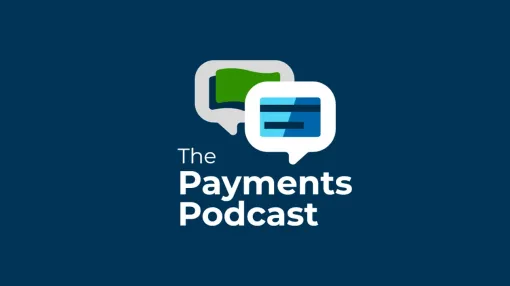I recently read a book called “Digital Darwinism” by Tom Goodwin. Let me give you the short version (although I highly recommend the entire read) courtesy of Blinkist: “too many businesses are only willing to make small gestures toward embracing new technologies… For legacy businesses, it’s essentially the same situation. Instead of tweaking an ailing system, you must be willing to make fundamental changes in order to truly adapt.”
I agree wholeheartedly. And as I worked my way through the book, a question in it really resonated: “How would you design your work processes if you had a blank piece of paper?” It hit me between the eyes because that’s precisely what so many accounts payable teams need. Instead of embracing a new vision that includes technology, too many companies bolt a technology onto existing systems and call it a day. You wouldn’t do that if you took a blank paper approach. Now, I’m not suggesting you blow up your business or get rid of any processes that truly get the results you want. A blank paper approach would require a reset; a hard look at the data telling you about your business’s efficiency (or lack thereof). And it would take an honest look at your processes.
Right now, the average manual AP process takes 15-20 steps. That process results in hard and soft costs that can clear $5 per check and $13 per invoice. Also, the average process is just plain slow. Solving those issues involves sweeping away the unnecessary steps built over decades. You really should start with a blank sheet of paper and an open mind.
Here’s an example: I was thinking about this blank paper approach and how automation fits into the bigger picture at the end of 2022. Then, over the holidays there was an explosion of chatter on LinkedIn about ChatGPT, a newer AI tool that can take prompts and deliver detailed responses. So I did what any curious marketer would do. I went to ChatGPT and asked it to “write a blog based on the question, ‘if I had a blank piece of paper, how would I design an accounts payable process?’"
Talk about a blank paper approach. The answer ChatGPT came back with would fill several of them. Here’s just a sample of the proposed, rather elementary answer:
“Here are the steps I would take if I had a blank piece of paper to design an accounts payable process: Identify the stakeholders: The first step in designing an accounts payable process is to identify all the stakeholders who will be involved in the process. This includes the accounts payable team, the finance team, the purchasing team, and any external vendors or suppliers.
Define the process flow: Next, I would define the steps involved in the accounts payable process, including the receipt of invoices, the approval process, the creation of payment batches, and the actual payment of invoices.”
It goes on, believe me. And the answer, as you can tell, plays at a high level, getting into documentation, data and processes. And while it’s impressive, you can’t exactly build a sound business plan from it, so I wouldn’t rely on ChatGPT to run your accounts payable department. Still, as a broad outline goes, it provides a good start. After you put that blank sheet of paper down on the table, literally or metaphorically, you will want to consult stakeholders, lay out a timeline, audit what needs to be in your process and get all the essential documents and controls in place.
Not that I took the entire answer as gospel, and neither should you. Example: Our AP Automation Guide recommends building a business case, ChatGPT assumes that this is approved. Not necessarily so. AP practitioners looking to automate should clearly identify the problem, explain the current state and include a financial analysis in their business case. The vendor you work with should articulate how many checks and invoices you can digitize to reduce time and costs, as well as how many rebates you will get back. Any vendor that states you will digitize 100% of your invoices or checks is playing fast and loose with the truth.
What’s also missing from our AI consultant is advice on how to replace your process with something that works better because you can’t just leave the blank piece of paper sitting there. Fortunately, the answer is obvious: Automation. That’s because automating invoices and payments can cut 80-plus% of your processing time for invoices and payments, cut costs by north of 70% and generate cash-back rebates where you dealt with expenses before.
So if automation is the answer, what would ChatGPT say about getting automated? I plugged in "what technologies do I need to automate the Accounts Payable process?" and again, I could fill an entire post with this, but here’s the essence of what I got back: “Invoice management software: This software allows you to electronically receive, review, and approve invoices, and can often integrate with your existing financial systems. Electronic payment systems: Instead of issuing paper checks, you can use electronic payment systems to pay invoices electronically, which can speed up the payment process and reduce the risk of errors or fraud.”
Again, a point for ChatGPT on the general outline, if not for thoroughness. I should also point out that one of the recommendations from ChatGPT was to integrate AI and machine learning, so I also appreciate an AI giving a plug for artificial intelligence, which shows ChatGPT has the soul of a marketer. These items loom large in a discussion about automation, with mobile apps streamlining approvals and electronic payments unlocking a new world of speed, security and rebates.
Where I’d build on this is to urge you to future-proof your AP process, so there’s no need for another blank sheet of paper in ten years. The best way to do that is to find one solution for your business that incorporates all the elements ChatGPT suggests, plus payment fraud prevention, supplier onboarding and other crucial needs it left out. Once live with your new software, you should be very close to full automation. But that’s not easy to do if you’re building a solution piecemeal.
As you can tell, this question has been rattling around in my mind for a while now. I think embracing the idea of starting with a blank page is crucial. In all likelihood, accounts payable teams will fill that blank sheet with automated processes to save manual effort, stop wasted time, reduce costs, and eradicate unnecessary frustration. It’s the most significant and positive change that marketers, AP teams, and even AI can embrace.


